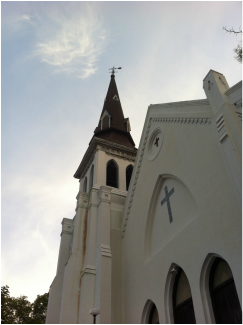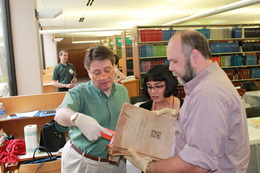PALMCOP’s Resources page offers a variety of links to great institutions, organizations, and associations who specialize in disaster plans, preservation, and much more. One resource that offers some great information is the Northeast Document Conservation Center. While the website breaks out conservation and preservation information based on format, one useful tool that covers them all is the Preservation 101 Online Textbook.
Preservation 101 is broken down into nine sections that are easy to follow. You can easily choose a section based on your institution’s needs. For example, Section 2 The Building and Environment covers general building issues, storage environment, pest management, mold protection, fire protection, and controlling of the environment. These sub-sections are thorough, yet concise. Under the sub-section Monitoring the Environment, you will find information on basic practices, why it is important to monitor the environment, the types of devices used to monitor, the types of pollutants that should be monitored, light level monitoring, and how to evaluate the data collected.
The sections are a great starting off point for understanding what is essential to preservation across archives, museums, and libraries. You may find all you need in the sections, or they can inform you of an aspect you did not consider before, and give you a starting off point for further research.
Jessica
Preservation 101 is broken down into nine sections that are easy to follow. You can easily choose a section based on your institution’s needs. For example, Section 2 The Building and Environment covers general building issues, storage environment, pest management, mold protection, fire protection, and controlling of the environment. These sub-sections are thorough, yet concise. Under the sub-section Monitoring the Environment, you will find information on basic practices, why it is important to monitor the environment, the types of devices used to monitor, the types of pollutants that should be monitored, light level monitoring, and how to evaluate the data collected.
The sections are a great starting off point for understanding what is essential to preservation across archives, museums, and libraries. You may find all you need in the sections, or they can inform you of an aspect you did not consider before, and give you a starting off point for further research.
Jessica















 RSS Feed
RSS Feed